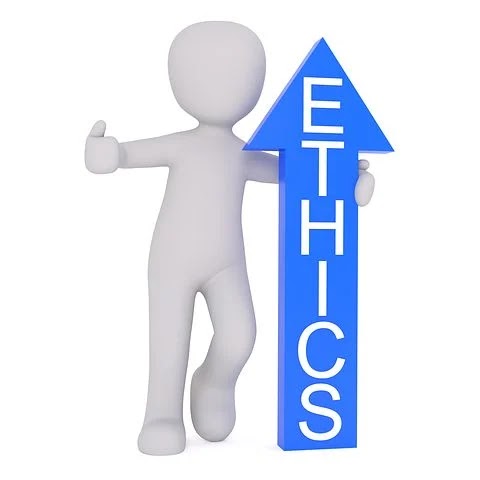Posts
Poultry The term Poultry refers to rearing of fowl, geese, ducks, turkeys and some variety of pigeons, but more often it is used for fowl rearing. Fowls are reared for food or for their eggs. ● Poultry birds reared for meat are called broilers. ● Female fowls raised for egg production are called layers. ● Cockerel is a young male fowl and rooster is mature male fowl. The hens normally start laying eggs from February and continue till August. The average production by an Indian breed is about 60 eggs per annum. Poultry Feed It includes bajra, jowar, barley, maize, wheat, rice bran, oil-cake, fish meal, bread, green residue of vegetables, salt, vitamins and minerals. Now-a-days, readymade poultry feed is also available in the market. Poultry Products The fowls are reared to obtain following useful products for human. (i) Eggs These are the rich source of easily digestable animal protein. These are the good sources of calcium, protein, iron, vitamins and a moderat...
Ethical Issues in Biotechnology The manipulation of living organisms by the human race needs some regulation on both ethical and moral grounds as genetic modification of organisms can have unpredictable results when such organisms are introduced into the ecosystem. (i) Biopatent A patent is the right granted by the government, to an inventor to prevent others to make commercial use of one’s invention. The patents granted for biological entities and products derived from them are called as biopatents. (ii) Biopiracy is the term used to refer the use of bioresources by companies and other organisations without proper authorisation from the countries and people concerned without compensatory payment. (iii) Biowar The war, which is fought with the help of biological weapons against humans, their crops and animals is called a biowar. In biowar, viruses, bacteria and some other harmful organisms are used and are called as bioweapons in biowar. (iv) Bioethics It is a...
MYTHS AND TRUTH ABOUT SEX YOU SHOULD KNOW Myth: Older adults don’t have sex. Truth: Sex may look and feel different at every stage of life. Even if someone is older, they are still sexual beings and should continue to learn and explore their sexuality – no matter how many candles are on their birthday cake. Myth: People with disabilities or chronic illness can’t have sex. Truth: Many people have different levels of ability. Regardless of someone’s ability, they are still sexual beings and can enjoy consensual sexual relationships like everyone else. Myth: Is a bigger penis better? Truth: Penises come in all shapes and sizes. The idea that bigger is better is simply false. What really makes sex better is compatibility with your partner and open communication about what feels good and what doesn’t. Myth: Vaginas are tight or loose depending on the amount of sex a person has had. Truth: The “tight vs. loose” idea is fairly common, but it is purely false. The vagina is a muscle that e...
Applications of Biotechnology in Environment Biotechnology has tremendous potential for unique, efficient, eco-friendly and economically viable options for waste treatment and degradation of hazardous waste into relatively less harmful products. Following biotechnological products help in the protection of environment. (i) Biosurfactants These are surface active substances synthesised by several microorganisms like bacteria and yeast. These have the property to reduce surface tension, stabilise emulsions and promote foaming. Biosurfactants have the potential to solubilise hydrocarbon contaminants and increase their availability for microbial degradation. In some bacterial species such as Pseudomonas neruginosa , biosurfactants are also involved in a group motility behaviour called swarming motility. (ii) Superbug It is a modified strain of oil eating bacteria which was developed by Prof. Anand Mohan Chakraborty. The process of working through which GMOs cleanup...
Single Cell Protein (SCP) Conventional agricultural production of cereals, pulses, vegetables, fruits etc., may not be able to meet the demand of food with the rate at which human and animal population is increasing. The shift from grain to meat diets also creates more demand for cereals as it takes 3-10 kg of grain to produce 1 kg of meat by animal farming. One of the alternate sources of proteins for animal and human nutrition is Single Cell Protein (SCP). Microbes are being grown on industrial scale as a source of good protein. Microbes like Spirulina can be grown easily on materials like waste water from potato processing plants (containing starch), straw, molasses, animal manure and even sewage to produce large quantities and can serve as food rich in protein, minerals, fats, carbohydrate and vitamins. Such utilisation also reduces environmental pollution. It has been estimated that in a day, 250 g of microorganisms like Methylophilus methylotrophus , because ...









